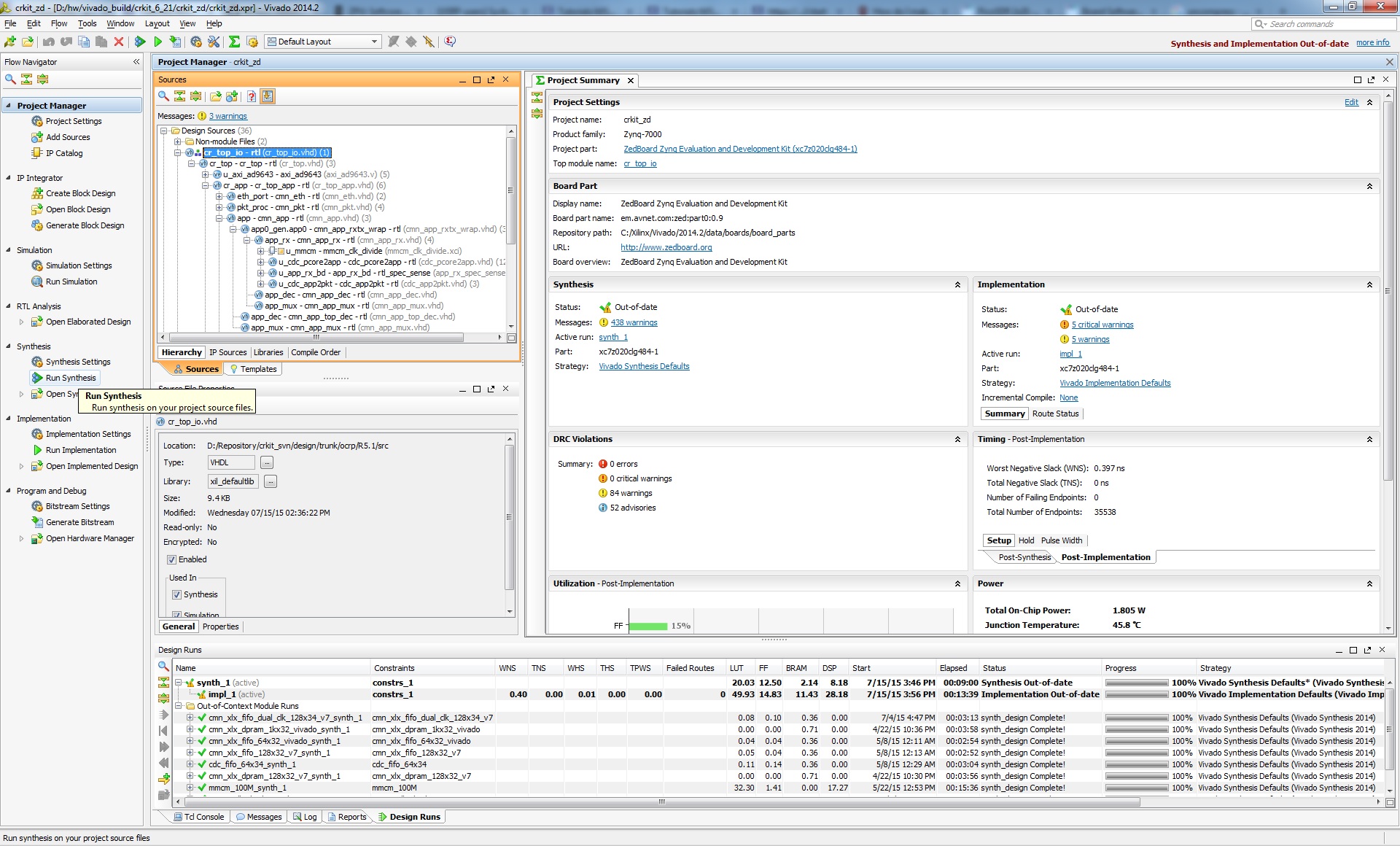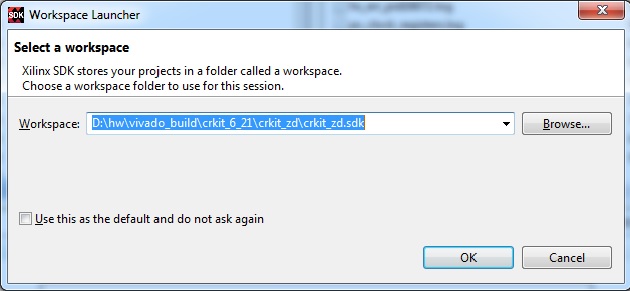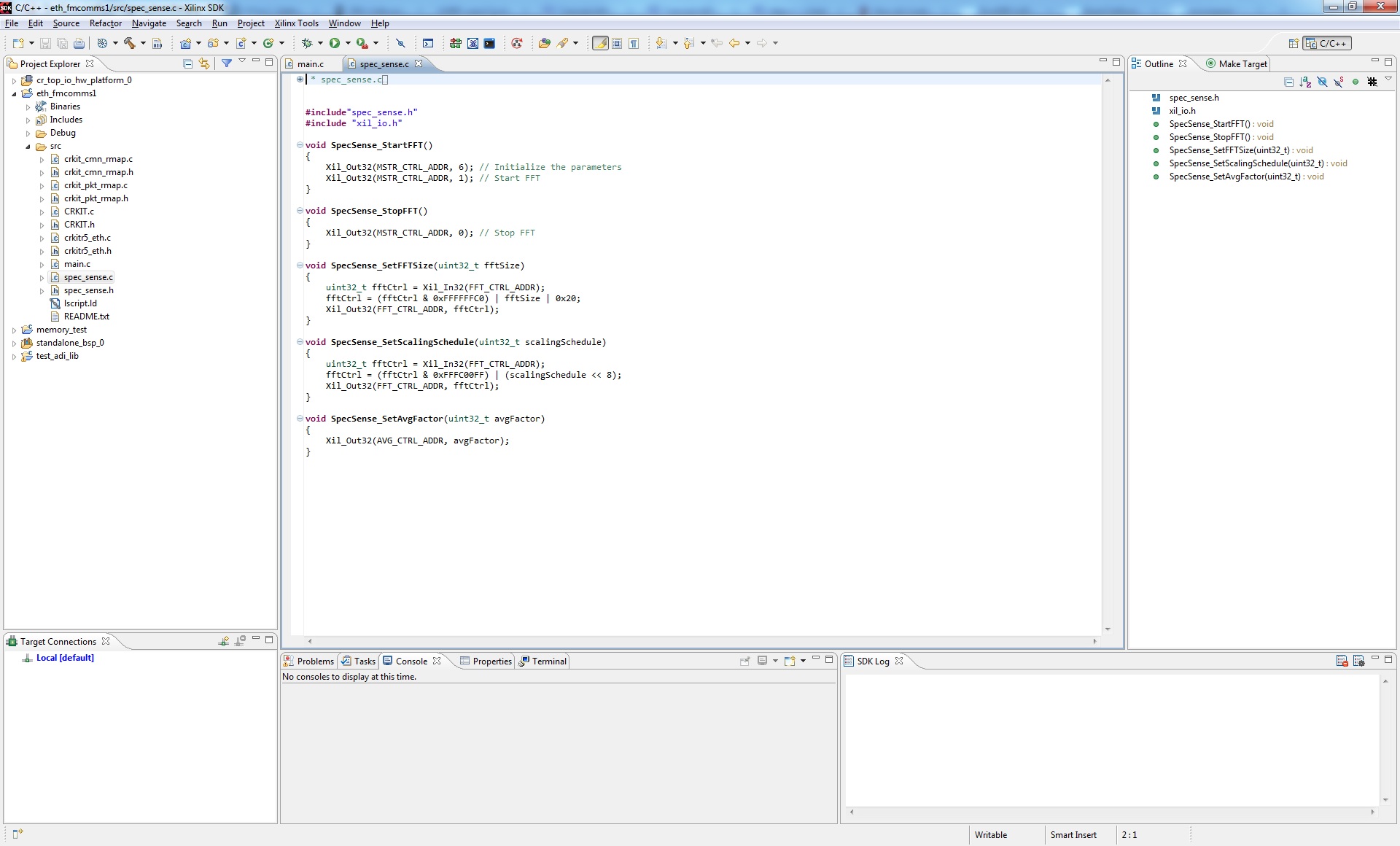Zynq-based WISER platform - Building the Firmware
Table of Contents
- SDR Tutorials
Description
This tutorial is a quick guide for building the WISER Zynq-based firmware.
Getting the FPGA source code
- If using a Windows machine, create a folder D:/Repository/crkit_svn
- Checkout the source code from the SVN repository http://crkit.orbit-lab.org/svn/crkit
- crkit_svn/design/trunk/vivado_build/crkit_spec_sense.zip is the spectrum sensing application build. Uncompress the zip file to D:/hw/crkit_zd folder.
Building the FPGA design
- Open crkit_zd.xpr, the Vivado project. The FPGA design consists of the CRKIT framework and the spectrum sensing receive application (instantiated as u_app_rx_bd). All the files here, point to the source files in the repository D:/Repository/crkit_svn. In case the source files are located elsewhere, they will have to be added to the project.
- Edit the code as needed, synthesize, implement and generate the bit stream.
Building ARM core software
- Launch Xilinx SDK and select the crkit_zd workspace from the above project
- The workspace has the imported hardware platform, a board support package and 3 projects
- memory_test - A memory test application to test the memory ranges in the hardware design.
- test_adi_lib - library of no-OS drivers for the RF card - ADFMCOMMS1.
- ethfmcomms1 - the spectrum sensing software which sets up and controls the framework, the RF front end (using test_adi_lib), and the spectrum sensing application.
- Edit the source and obtain .elf file by building the project.
Last modified
10 years ago
Last modified on Sep 24, 2015, 6:50:57 PM
Attachments (3)
- vivado_project.jpg (638.5 KB ) - added by 10 years ago.
- sdk_workspace.jpg (286.7 KB ) - added by 10 years ago.
- sdk_workspace_launcher.jpg (43.8 KB ) - added by 10 years ago.
Download all attachments as: .zip
Note:
See TracWiki
for help on using the wiki.



